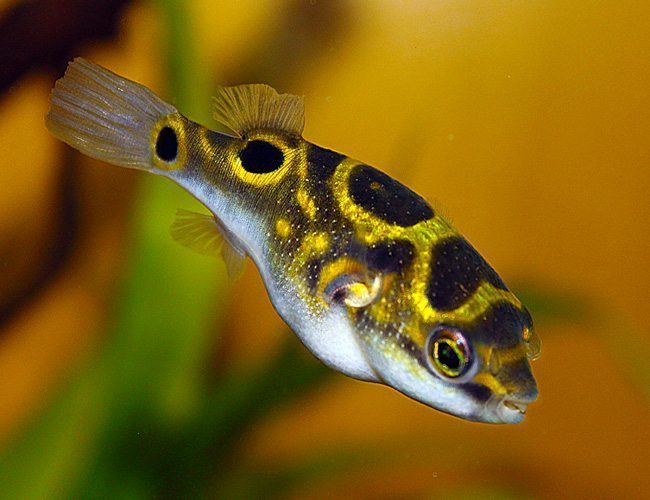Can puffer fish be kept as pets in an aquarium for viewing purposes? Are there any non-poisonous types?
による
Mr.Knowledgeable
27 Sep 2024
puffer fish can be kept as pets in an aquarium, and they are quite popular due to their unique appearance and behavior. However, there are important considerations when keeping puffer fish, especially regarding their care, behavior, and the types of puffers that are more suitable for home aquariums.
Types of Puffer Fish
Puffer fish come in various species, and some are more suitable for aquariums than others. Here are a few commonly kept species:
Dwarf Puffer (Pea Puffer):
- Size: Around 1 inch.
- Environment: Freshwater.
- Temperament: Can be aggressive towards other fish, so they are often kept in species-specific tanks or with carefully chosen tank mates.
- Toxicity: Dwarf puffers are not known to be poisonous, making them a safer choice for home aquariums.
|
 |
|
Figure Eight Puffer:
- Size: Up to 3 inches.
- Environment: Brackish water (a mix of freshwater and saltwater).
- Temperament: Relatively peaceful but may still nip at other fish. They are better kept with species that can tolerate brackish water.
- Toxicity: Like most puffers, figure eight puffers can produce toxins, but they are not typically dangerous to humans if handled properly.
|
 |
|
Fahaka Puffer:
- Size: Up to 16 inches.
- Environment: Freshwater.
- Temperament: Extremely aggressive and best kept alone in a large tank.
- Toxicity: Fahaka puffers can be toxic if consumed, but they do not pose a threat in an aquarium setting.
|
 |
|
Green Spotted Puffer:
- Size: Up to 6 inches.
- Environment: Brackish to full marine conditions as they mature.
- Temperament: Aggressive and best kept in a species-specific tank.
- Toxicity: Green spotted puffers are also toxic if ingested but safe for aquarium viewing.
|
 |
Non-Poisonous Types
While almost all puffer fish produce some level of tetrodotoxin, a potent toxin, they are generally safe to keep in home aquariums as long as they are not consumed. The toxin is mainly a concern for predators or if the fish is eaten by humans or other animals. Handling puffer fish with care and avoiding ingestion or injury is important.
Care Considerations
-
Diet: Puffers have strong beaks and need a diet that includes hard-shelled foods like snails and shrimp to prevent their teeth from overgrowing.
-
Tank Size: Puffers, depending on the species, may require a large tank due to their size and activity level.
-
Water Quality: Maintaining clean, well-filtered water is crucial, especially for species like the figure eight and green spotted puffers that require specific salinity levels.
-
Tank Mates: Puffers are often aggressive and may nip at or harm other fish. It's essential to choose tank mates carefully or keep them alone.

Conclusion
Puffer fish can make fascinating pets in a home aquarium, but they require specific care and attention. While most species produce toxins, this does not pose a risk to their owners if they are handled properly and cared for in a safe environment. Non-poisonous varieties, like the dwarf puffer, are particularly popular and are generally easier to manage in terms of toxicity concerns.














































































































